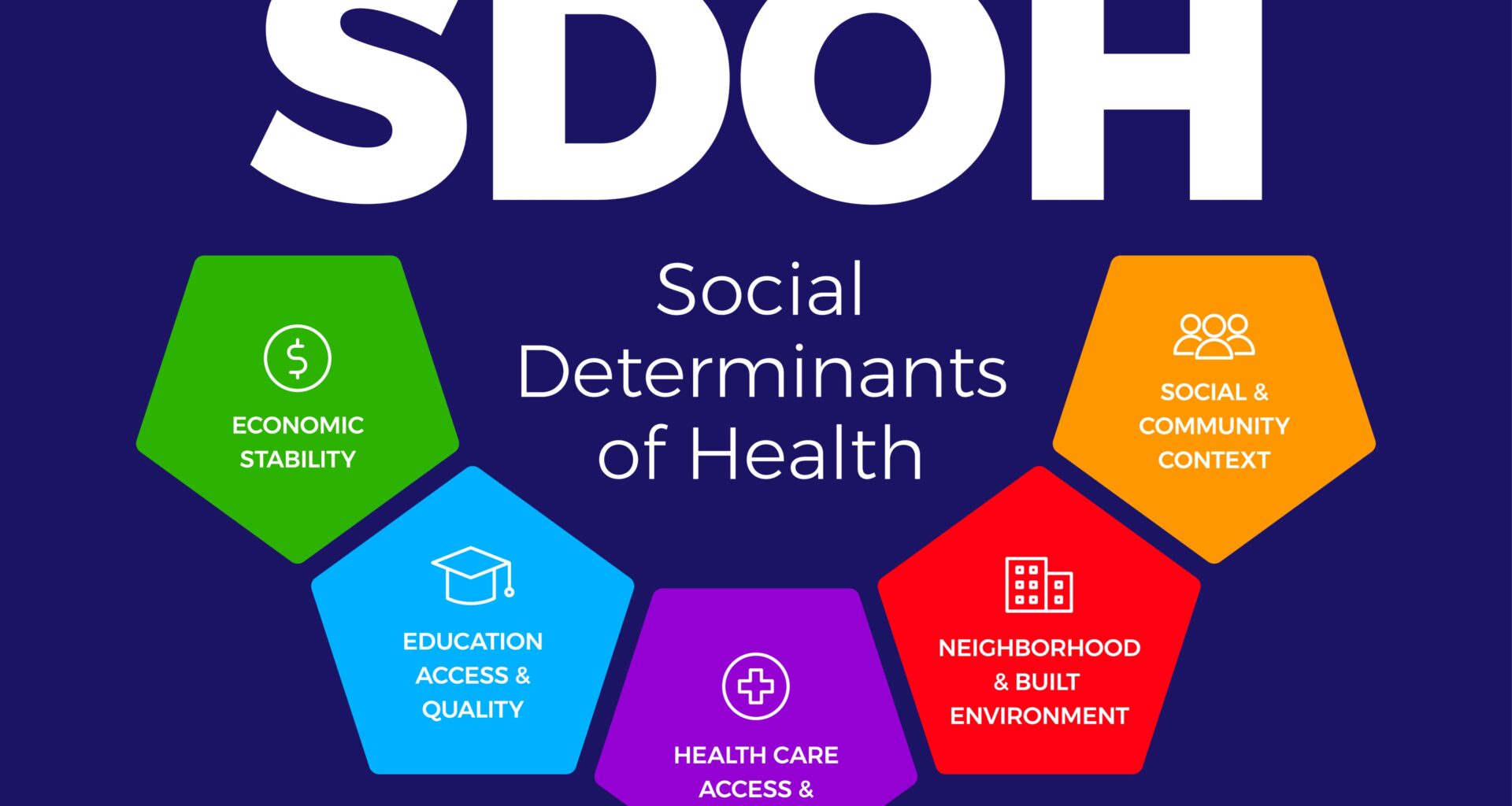As a healthcare professional, you dedicate yourself to promoting patient well-being. But have you considered the silent factor influencing your patients’ health outcomes – their homes? This blog delves into the critical link between affordable housing and health, highlighting it as a key social determinant of health (SDOH).
SDOH is the economic and social conditions that shape your patients’ health beyond medical interventions. These include factors like income, education, access to healthcare, and—you guessed it—housing.
Imagine this situation: A patient with chronic asthma constantly struggles to control their symptoms. During a visit, you discover they live in a damp basement apartment with mold. This revelation sheds light on a hidden factor worsening their condition. The damp and moldy environment, not readily considered before, is likely a hidden factor significantly worsening their asthma condition. This scenario highlights the crucial link between a patient’s living environment and their overall health.
Unstable Housing – A Hidden Barrier To Good Health
Unstable housing, encompassing situations like frequent moves, overcrowding, or substandard living conditions, can have a profound and negative impact on your patient’s health, making it more challenging for you to provide adequate care. Here’s a closer look at how:
- Exacerbated Chronic Conditions: Many forms of inadequate housing lack proper ventilation or expose residents to harmful environmental hazards like mold, lead, or pests. These factors can significantly worsen chronic health conditions like asthma, allergies, and respiratory illnesses. The constant irritation and inflammation caused by triggers in the living environment can lead to increased symptoms, medication reliance, and difficulty managing the condition.
- Increased Healthcare Utilization: The stress and instability associated with unstable housing can lead to unhealthy coping mechanisms and a decline in overall well-being. This often translates to more frequent emergency room visits and hospital admissions for preventable health complications. Patients might neglect routine check-ups or preventative measures due to the constant upheaval, leading to delayed diagnoses and potentially more serious health issues down the line.
- Mental Health Struggles: The constant stress of worrying about rent, potential eviction, or finding a new place to live can take a significant toll on a person’s mental health. Anxiety, depression, and feelings of hopelessness are very typical consequences of unstable housing. These mental health struggles can further complicate existing medical conditions, creating a negative cycle where stress exacerbates physical symptoms and makes it harder to manage overall health.
- Disrupted Care Continuity: Frequent moves can disrupt a patient’s established care routine. Maintaining trust and rapport with a care provider takes time, and constantly changing doctors can make it difficult to create a comprehensive understanding of a patient’s medical history. This lack of continuity can hinder effective treatment plans and make it harder to manage chronic conditions.
- Barriers To Healthy Habits: Unstable housing environments often lack basic amenities or safe spaces for exercise and healthy food preparation. This can make it difficult for patients to follow treatment plans that involve healthy lifestyle changes like diet and exercise. Additionally, the stress of their living situation can lead to unhealthy coping mechanisms, further impacting their overall well-being.
By understanding how unstable housing acts as a hidden barrier to good health, healthcare providers can take a more holistic treatment methodology to patient care.
Affordable Housing – A Powerful Ally In Patient Care
By advocating for affordable housing and health, you can become a powerful ally in your patients’ health journey. Here’s how:
- Improved Treatment Outcomes: Stable and secure housing offers a foundation for better health. When patients don’t constantly worry about where they will live next, they can focus on managing their health more seamlessly. Reduced stress translates to better adherence to medication schedules, increased motivation to follow treatment plans, and a higher chance of experiencing positive health outcomes. Furthermore, a safe and healthy environment free from environmental hazards minimizes the risk of complications and allows your treatment plans to have a more significant impact.
- Reduced Healthcare Burden: Affordable housing can decrease the overall healthcare burden for both patients and the healthcare system to a great extent. By addressing the root cause of preventable health problems stemming from inadequate housing, fewer hospital visits due to complications from chronic conditions or exposure to environmental hazards occur. Patients can focus on preventive care and avoid costly emergency room visits, leading to a healthier population and lower healthcare costs.
- Holistic Patient Care: Understanding the impact of housing on health empowers you to provide more comprehensive and compassionate care. By recognizing the social determinants affecting health, which are the social and economic factors that influence health outcomes, you can go beyond just treating symptoms. Working with social workers or community resources to address housing instability can be just as important as traditional medical interventions in achieving optimal health outcomes for your patients. This holistic approach demonstrates your commitment to your patient’s well-being and allows you to truly be a partner in their health journey.
Additionally, advocating for affordable housing and health can have a ripple effect:
- Improved Community Health: Ensuring access to safe and healthy housing for all contributes to the overall health of your community. Reduced exposure to environmental hazards, improved living conditions, and decreased stress can lead to a healthier population overall.
- Stronger Patient-Provider Relationships: Advocating for your patients’ well-being beyond the confines of the doctor’s office encourages trust and strengthens your relationship with them. Patients feel valued and understood, knowing their healthcare provider cares about their overall health and quality of life.
Industry Trends – Affordable Housing And Health
The healthcare industry is finally recognizing the undeniable link between affordable housing and patient health. This shift in perspective is leading to exciting new trends and collaborations:
- Partnerships For Change: Hospitals and healthcare systems are increasingly developing partnerships with housing agencies and community organizations. These collaborations aim to develop programs that address the housing needs of both healthcare staff and vulnerable populations within the community. For staff, these programs can present affordable housing options or financial assistance programs, resulting in increased recruitment and retention. For vulnerable communities, partnerships can focus on developing supportive housing models that integrate healthcare services on-site, elevating access to care and overall health outcomes.
- A Proactive Approach: Healthcare professionals are moving beyond a reactive approach to illness and adopting a more preventative model. By advocating for affordable housing and health initiatives, they can play a proactive role in preventing health problems before they occur. Stable and secure housing removes a significant stressor from people’s lives and provides a safe environment conducive to healthy habits. This proactive approach can bring forth a healthier population overall, fewer hospital admissions, and lower healthcare costs in the long run.
The Takeaway
By championing the correlation between affordable housing and health, you’re not just advocating for a social issue but directly impacting your patients’ well-being. Encourage discussions about SDOH with colleagues and support initiatives that promote safe, stable housing for your community. Remember, a healthy home is a healthy foundation for your patient’s health journey.
[Previous Blog: The Future Of HIPAA Compliance – Navigating The Evolving Landscape]












